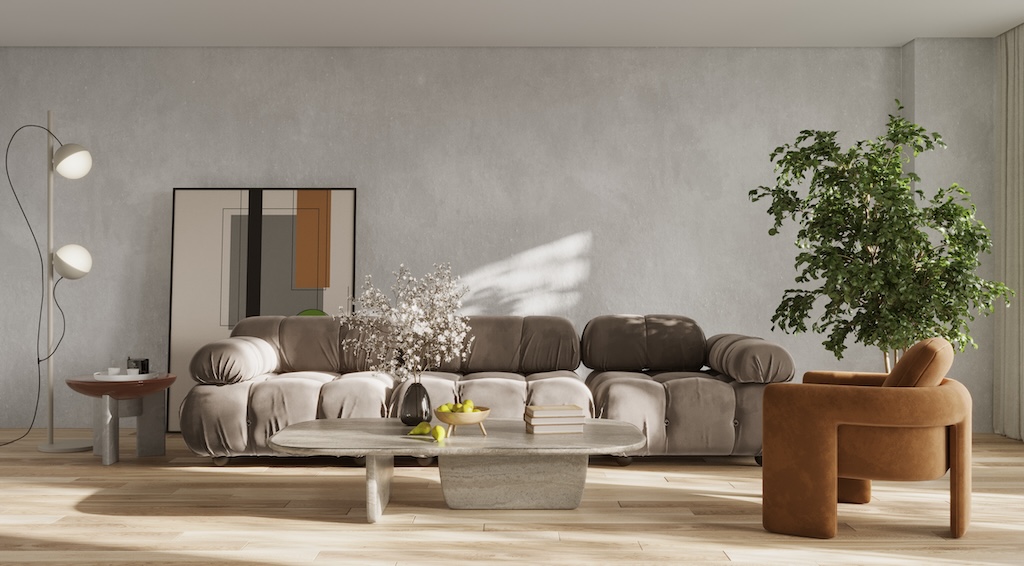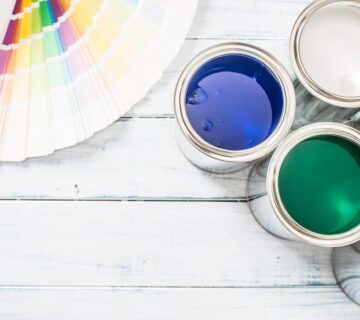Embarking on an interior painting project is an exciting way to revitalize your home. However, achieving professional-looking results requires more than just choosing the right color and paint; it starts with thorough preparation. Properly prepping your space for interior painting ensures the process goes smoothly and helps achieve a beautiful, lasting finish. Taking the time to prep not only improves the look of your paint job but also protects your home from splatters and accidents.
Assessing and Planning
Understanding the Scope of the Project
Begin by evaluating the rooms you plan to paint. Consider the size, the amount of work required, and any specific challenges like high ceilings or intricate trim work. This assessment will help you estimate the time needed for the project and organize your supplies accordingly. Furthermore, a detailed plan can prevent interruptions and ensure that you have all the materials necessary to complete the job efficiently.
Choosing Your Paint and Tools
Select the appropriate paint and finishes based on the room’s function and lighting. Gather all the necessary tools, including brushes, rollers, paint trays, and drop cloths. Don’t forget essentials like painter’s tape, sandpaper, and spackling compound for repairs. Researching the best products for your particular situation can save time and enhance the quality of your work.
Preparing the Room
Clearing and Protecting the Space
Remove as much furniture and decor as possible. For items that can’t be moved, group them in the center of the room and cover them with drop cloths or plastic sheeting. Don’t overlook light fixtures, switch plates, and outlet covers – removing these will make your painting job easier and cleaner. A clear workspace will allow for better mobility and minimize the risk of paint damage to your belongings.
Protecting Floors
Floor protection is crucial. Use canvas drop cloths, which are absorbent and non-slip, to cover the flooring. Secure the edges with painter’s tape to prevent paint from seeping through gaps. Ensuring your floors are well-protected will save you from future cleanup and preserve the condition of your flooring.
Surface Preparation
Cleaning Walls
Clean the walls to remove dust, dirt, and grease. A solution of mild detergent and water usually works well. Ensure the walls are completely dry before you begin painting. This step is vital for paint adhesion and to achieve a smooth finish.
Repairing Damage
Inspect the walls for cracks, holes, or other imperfections. Use spackling paste to fill small holes and cracks. For larger repairs, you may need joint compound and drywall tools. Once the repairs are dry, sand the surfaces smooth. Properly repaired and prepared walls are the foundation of a professional-looking paint job.
Sanding and Deglossing
If the walls have a glossy finish, lightly sand them to help the new paint adhere better. For heavy textures or rough surfaces, more extensive sanding may be required. Deglossing is necessary to ensure the new paint layer bonds well with the surface. This step is particularly important if you’re transitioning from an oil-based paint to a latex-based paint.
Priming
In some cases, applying a primer is necessary, especially if you’re covering a dark color or painting over bare drywall. Primer helps in achieving a uniform finish and enhances the paint’s durability. It can also block stains and prevent bleed-through from previous paint layers. Some situations may require a tinted primer to help with color transition.
Taping and Edging
Use painter’s tape to protect baseboards, trim, and the edge where the wall meets the ceiling. Ensure the tape is smoothly applied to prevent paint from bleeding underneath. Proper taping ensures clean lines and professional-looking edges. Investing time in this step pays off in the overall finish of the painting project.
Final Checks
Ensuring Proper Ventilation
Good ventilation is essential for safety and to help the paint dry properly. Open windows or use fans to circulate air in the room. Proper ventilation will also dissipate fumes quickly, making the environment safer and more comfortable to work in. Always follow the manufacturer’s recommendations for drying times and conditions.
Organizing Painting Supplies
Finally, organize your painting supplies for easy access. Having everything you need within reach will make the process more efficient and less stressful. An organized workspace can prevent accidents and save time during the painting process. It’s also helpful to keep cleaning supplies nearby for quick cleanups of any spills or splatters.
Final Thoughts
Preparing your home for an interior painting job is a critical step in the painting process. By taking the time to properly prep your space, you set the foundation for a successful paint job that will enhance the beauty and comfort of your home. For more tips on interior painting and home improvement, visit our website at sisupainting.com and explore our blog at sisupainting.com/blog.





No comment